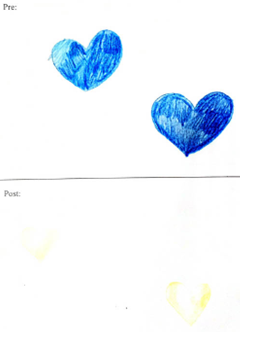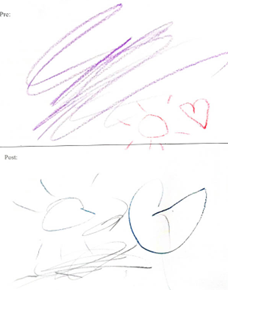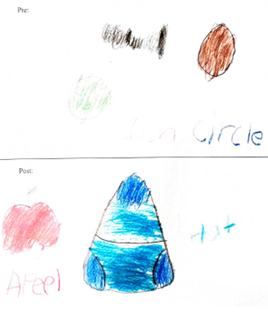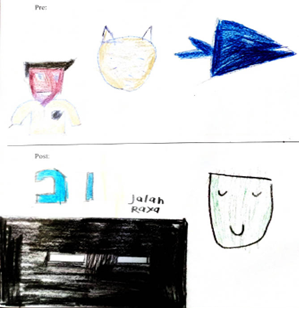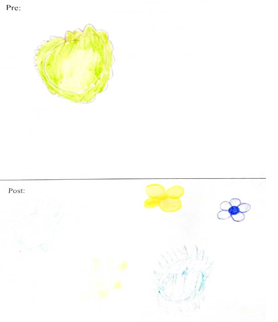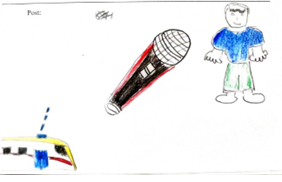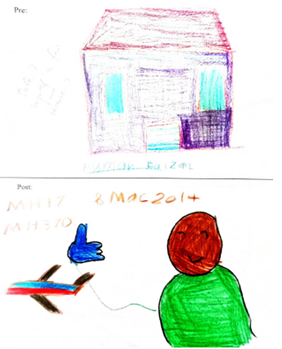Exploring the Impact of Adapted Physical Education toward Physical Activity Intentions, Social Inclusion, and Positive Learning Environment among Students with Disabilities
- Ahmad Fahim Zulkifli
- Rozlyna Yussof
- 208-222
- Apr 27, 2024
- Education
Exploring the Impact of Adapted Physical Education toward Physical Activity Intentions, Social Inclusion, and Positive Learning Environment among Students with Disabilities
Ahmad Fahim Zulkifli¹, Rozlyna Yussof²
¹Faculty of Education, Faculty of Health Science Universiti Teknologi MARA, UiTM Puncak Alam Campus, 42300 Puncak Alam, Selangor, Malaysia
²Community-Based Rehabilitation (CBR) Centre, Jalan Alam Suria 16/11, Bandar Puncak Alam, 42300 Bandar Puncak Alam, Selangor, Malaysia
DOI: https://dx.doi.org/10.47772/IJRISS.2024.804017
Received: 12 March 2024; Revised: 20 March 2024; Accepted: 26 March 2024; Published: 27 April 2024
ABSTRACT
This study is designed to investigate the role of adapted physical education (APE) toward physical activity (PA) intentions, social inclusion, and a positive learning environment among people with disabilities (PWDs). This study involves a qualitative study approach involving a group of participants (i.e., 25 participants; mix-genders with an age range between 3 and 27 years old) comprised of students registered with the Wonder PPDK in central Selangor Malaysia. The qualitative approach in this study utilised a series of questions and answers through drawings to gain insights from the participants’ perspectives on the intervention. The drawings were analysed collectively between authors to identify common pictorial phenomena through features such as lines, colours, images, and space. This study found that APE provided an avenue for the participants to engage in complex thinking through appropriate-planned activities, shift from self-oriented towards engagement with others, and experience a sense of freedom which translated into a feeling of comfort in APE. Besides that, the participants suggest that APE helped them to feel happier and more desire to contribute something meaningful to their peers or people around them. Our work answers the questions regarding the role of APE towards nurturing self-efficacy in PWDs while also highlighting the need to address the current shortcomings of APE, particularly in the Malaysian context. Additionally, future studies should consider longer periods of intervention, a higher number of participants, and additional approaches or instruments to solidify the current understanding of how APE can be used as an agent of change for PWDs.
Keywords: Adapted Physical Education, Intentions, Learning Environment, Social Inclusion, Students with Disabilities
INTRODUCTION
The ever-increasing trend of people with disabilities (PWDs) to enroll in various learning institutions in Malaysia has placed greater emphasis on how educators should perceive, approach, and navigate their teaching and learning with PWDs. Nonetheless, many Malaysians are still practicing double standards regarding PWDs education in which lethargic efforts were made to learn, increase awareness, and modify PWD’s learning environment (Nasir & Efendi, 2016). Besides that, issues such as heavy syllabus for students, lack of training for teachers and capacity of resources for the teachers have also contributed to the slow progress of adapted physical education in Malaysia (Cheng & Loh, 2011; Nasir & Efendi, 2016).
In a recent report from the Department of Social Welfare (DOSW), there were 674,548 individuals registered as persons with disabilities (PWDs) in Malaysia with most of them experiencing physical (i.e., 245,015) and learning disabilities (i.e., 236,972) respectively (DOSW Statistics Report, 2023). Both multiple disabilities and speech issues constitute the lowest number of registered individuals with 30,883 and 3,509 respectively. Regarding the Community-Based Rehabilitation Programme in the year 2022, Selangor is the second state that possesses the most centres with 2,014 with 60 supervisors and 330 social workers assisting at the centres across Selangor (DOSW Statistics Report, 2023). Even the smallest state in Malaysia (i.e., Perlis) possesses 245 centres with 10 supervisors and 65 social workers. Apart from adults, trainees in the age levels between 7 and 12 years make up the most students at the centres with 2,839 and 1,486 male and female respectively. Nonetheless, individuals in the age levels of 46 years and on wards contributed to the minority numbers with 151 and 148 for males and females respectively (DOSW Statistics Report, 2023).
The figures demonstrate the widespread populations registered at the centres and in need of support of cognitive, affective, and psycho motor to learn life skills, become more independent, and have the chance to integrate with society. It is also of paramount importance for educators to strengthen their fundamentals of inclusive learning, and upgrade their current content knowledge, student management and pedagogical methods to enable learning and promote wellness among PWDs. Besides that, the statistics highlighted the importance of coordinated effort from stakeholders to refine the current standard curriculum and focus on supporting the teachers at the centres to provide adapted and personalised education to students based on their conditions, strengths, weaknesses, and interests.
Adapted Physical Education and Its Influence on PA Intentions
Adapted physical education (APE) provides an avenue where students with disabilities can be active and develop the skills needed for them to be successful and independent learners. Constant participation in the learning process provided them with higher self-esteem to learn content and become physically fit (Yun & Beamer, 2018).Often, the lack of meaningful physical activity engagement will hinder the individuals’ development of motor skills which affects their ability to achieve lifetime well being. Specifically, both teachers’ approach and lesson content played a pivotal role in shaping students’ beliefs and interest in lifetime physical activity (PA). A study by Jin and Yun (2013) on teachers’ behaviours on middle school students’ PA participation found that lesson content was equally important as teacher’s behaviours in influencing the amount of PA engagement among students. A more recent study also reiterates the role of lesson content and teaching styles in direct roles to develop intentions and persuade students to engage in PA (Yun & Beamer, 2018).
Nonetheless, the lack of teachers trained in adapted physical education in Malaysia often hindered their preparation to plan their lessons around students with disabilities, and perform the modifications in their instructions, equipment, and playing area to successfully include and provide the necessary skills for them to be successful (Nasir & Efendi, 2016). Although the majority of the teachers possess good intentions, many lack the necessary knowledge and skills to adapt the curriculum. For instance, the undergraduate-level teachers’ preparation programme in the author’s university only offers one class in APE throughout the four years of their studies. Factors such as time constraints, number of students, and limited equipment provided further challenges for the pre-service teachers to learn and train in APE. This limitation is seldom adequate to equip pre-service teachers with the knowledge and skills to adapt the curriculum for students with a variety of disabilities (Lieberman & Houston-Wilson, 2009).
Social Inclusion Through Adapted Physical Education
The word “inclusion” is commonly defined as the process of educating students with and without disabilities together(Lieberman & Houston-Wilson, 2009).Many studies have highlighted the crucial role of social inclusion in APE; many students perceive meeting friends and making new friends as their main motive for participating in sports, exercise, and PA (Martinek et al., 2019).Others have found that friendship and inclusion in APE provided a spectrum of benefits such as self-validation and ego support (Hartup & Stevens, 1999; Abdullah et al., 2019), emotional security (Parker & Asher, 1993; Zulkifli & Anal, 2023),Click or tap here to enter text.help and guidance (Parker & Asher, 1993), reliable alliance (Weiss, 1987), a source of intimate disclosure (Berndt, 1992),and companionship and stimulation (Parker & Asher, 1993).The reconciliation of emotion with cognition in the classroom should also allow the development of skills such as self-control, self-awareness, empathy, active listening, conflict resolution, and peer collaboration (Cañabate et al., 2018). Those benefits would then resonate with the development of individual’s, behaviour patterns, and attitudes (Weiss & Stuntz, 2004; Cañabate et al., 2018).
Social inclusion effort in APE often focuses on engagement during PA which increases the likelihood of students learning new movement skills and improving their physical fitness(Yun & Beamer, 2018).The curriculum is modified to be age-appropriate and suitable for their current capabilities. The contents can be tailored to students’ interests and introduce various modifications in terms of equipment, instruction short and concise, and a safe playing area which allows students to explore learning, gain self-esteem, and become successful in learning the content rather than coping with lengthy and confusing instruction, lack and unsuitable equipment (e.g., too big, small, heavy), and navigating between hazard in the regular classroom (Zulkifli & Kulinna, 2018).The constant success and enjoyment associated with APE would directly influence the levels of physical activity among students with disabilities (Jin et al., (2018).Importantly, social attitudes, and individual and collective behaviours learned by students during sporting activities are then internalised in the student’s behavioural repertoire and re-enacted and manifested in future contexts such as work or family relations(Cañabate et al., 2018).
The Learning Environment in Adapted Physical Education
The learning environment in APE also serves as an important determinant to help students with disabilities learn effectively. Past studies with students with disabilities required them to rate their experiences as “good days” and “bad days” depending on the situation. Manipulating their teaching approach and learning climate; on “good days” the students shared a sense of belonging, shared in the benefits of the activity, and were able to master the tasks while on “bad days” the students associated learning with restriction, felt isolated, and their competence was questioned(Goodwin & Watkinson, 2000).
A more recent study stresses class content, location, instruction methods, and teacher behaviours to scaffold the learning objectives and promote desirable PA levels among students (Yun & Beamer, 2018).For example, teachers adopting the teaching games for understanding (TGfU) when teaching sports skills would be able to maximise students’ meaningful participation as they learn through movement and receive higher practice time during APE. The studies carried out about planned modified learning environments in APE highlighted the improvements in following rules, respecting others, responsibility, cooperation, self-esteem, and solidarity, among other aspects (Cera Castillo et al., 2015; Yun & Beamer, 2018).
In contrast, the traditional approach of drills and practice lacks authenticity, reduces both movement and chance for skills practice and requires a longer waiting time (Zulkifli & Kulinna, 2018). Importantly, a game which promotes togetherness and teamwork produces the highest benefits to the individuals’ feelings, emotions, and opinions while traditional-like games produce the lowest scores in the same variables (Cañabate et al., 2018). Subsequently, elimination games such as dodgeball or tag-out games should not be a part of APE classes due to higher risks of injuries, reduced opportunity for PA, minimal skills practice time, and reduced self-esteem (Elliott et al., 2016).A poorly planned learning environment in APE will more likely result in students being ridiculed, left out, and made to feel bad if they are on a team that loses a game (Place & Hodge, 2001).Consequently, students with disabilities tend to become more passive, hesitate to participate, and heighten their fear of failure in activity and disappoint others (Cañabate et al., 2018).
The purpose of the study was to investigate the potential of APE towards PA intentions, social inclusion, and a positive learning environment from the perspective of students with disabilities. The following specific questions were addressed (1) does APE influence participants’ intention to engage in continuous PA? (2) how does APE function in promoting social inclusion and higher engagement between students and teachers?, and (3) how do participants view their positive learning environment during APE?
METHODOLOGY
This study utilised a qualitative study approach to develop an intervention study without a control group with selected students with disabilities as participants. The three main strategies for this qualitative fieldwork include experiencing, enquiring, and examining (Mills, 2014). Outcomes were assessed at baseline and endpoint (i.e., pre-intervention measured before the intervention) and (i.e., post-intervention measured at the end of the intervention) respectively. Ethics approvals were obtained from the author’s university Research Ethics Committee. Pseudonyms were used throughout the study to protect the participant’s confidentiality and the interests of the organisation associated with this study.
The sampling technique used for this study is purposive sampling, which ensures that the sample group represents the characteristics of the target population (Fraenkel, et. al, 2019). Several inclusion criteria include (1) students registered as people with disabilities (PWDs) with the Department of Social Welfare, (2) registered as students at Wonder PPDK at Bandar Puncak Alam Selangor, (3)no particular injuries at the beginning of the study, (4) able to understand and speak basic Bahasa Melayu and English, and (5) provide guardian consent and assent for participation and video recorded throughout the intervention.
Settings
All participants were registered with the Wonder “Pusat Pemulihan Dalam Komuniti (PPDK)” or Community-Based Rehabilitation (CBR). The PPDK was governed by the Department of Social Welfare under the jurisdiction of the Ministry of Women, Family, and Community Development. The main purpose of the centre is to provide a platform for students with disabilities to learn and develop the skills necessary to enrol on special education classes in local and national schools. Classes were held every day between Monday and Friday starting at 8 am until 12.30 pm daily and focused on motor skills, social and language development, the 3 “M” (i.e., membaca, menulis, mengira or reading, writing, calculating skills), games include sports and recreation, vocational training, and music therapy (PPDK, 2023). There were 25 mix-genders participants from Malay ethnic backgrounds residing in the local area of Bandar Puncak Alam, Selangor, Malaysia. Most of the participants reported autism and down syndrome conditions with ages ranging from 3- 27 years old. The intervention was conducted in December 2023 at a multi-purpose hall nearby to the main centre.
Procedures
The consent and assent forms were distributed to participants and returned to the researchers before the intervention. The researchers have guaranteed the participants their confidentiality, using pseudonyms and using data only for this research purpose. The participants were encouraged to draw or write based on the same questions given during pre-and-post intervention to assess potential changes in their thoughts and understanding of the roles of adapted physical education. The participants were given a few pieces of paper (i.e., one question per paper), pencils, and crayons to complete the drawing pre-and-post intervention. Each of the participants was given five minutes maximum to complete each drawing supported by the facilitators when needed. Throughout this intervention study, the researcher strived to maintain the authenticity of the artworks and presented them respectfully.
During the intervention, the participants were divided into four different groups which rotated around the four stations aimed to develop and improve their gross motor skills and engagement with peers. Each participant would spend around 10 minutes in each station doing the activity as much as possible before moving on to the next station. Briefly, activity one called “Snake Trail” involves the participants moving from point A to B while carrying a foam ball. The participants were encouraged to follow the zigzag-shaped route while carrying the ball and accompanied by a facilitator. Once reaching point B, the participants were asked to throw or place the ball into the provided box. Activity two was called “Bamboo Station” which also involved moving from point A to B. The participants would carry a sponge to point B before soaking the sponge in the water and filling up the empty water bottle provided at point B. Activity three dubbed “Steal the Eggs” involves the participants at point A scooping a ball and placing it into a cup before running to point B and releasing the ball in the provided box without dropping the ball. Lastly, an activity called “Throwing the Bean” requires the students to run from point A to B while holding a bean bag. Once they reached point B, they needed to throw the bean bag into the target box about 2 meters in front of them. The activity continued for around 10 minutes and the facilitator would assist in counting the points scored by the participants.
At the end of the intervention, the participants were provided with worksheets and the following instructions (1) what is your experience learning and playing with friends in adapted physical education? (social inclusion) (2) what would you want to have during adapted physical education? (positive learning environment), and (3) What is your feeling when learning and playing during adapted physical education? (intention). The researcher begins the process by reading the instructions at the top of each worksheet out loud. The researcher would then proceed to have the participants start drawing without giving detailed instructions or information about the drawings. The worksheet encourages participants to draw while also providing space for them to write anything to support their drawing. Subsequently, all the artworks were stored safely under a code number with no identifying details.
Instruments
The application of drawings in research has steadily improved and been utilised in different fields of study such as social studies and public health (Loke et al., 2013; Nagamey et al., 2018). Drawings provide researchers with a unique perspective of the participants’ experience both abstractly and figuratively. It encourages the participants to express their normally hidden or repressed thoughts and feelings in less intimidating environments (Loke et al., 2013; Nagamey et al., 2018). This was due to the process involved in drawing which stimulates participants’ visual, kines thetic and semantically. Consequently, drawing activities could help boost memory, increasing the capability to recall information by nearly double compared to writing alone (Fernandes et al., 2018).
For instance, in their studies with undergraduate students, when comparing writing and drawing, they found that a writing list of objects alone allows for 20% of word recalls while drawing the written objects allows for 45% recall of all the objects stated at the beginning of the study (Fernandes et al., 2018). Researchers’ convention about drawing using colours, shapes, and motifs in visual content allows the unconscious thoughts to be expressed, further adding layers of meaning to the stated verbal content (Ellis, 2007; Lev-Wiesel & Liraz, 2007).The addition of drawing to word-based research presented researchers with a better opportunity to explore both the multiplicity and complexity of the participants’ experience during adapted physical education(Betts, 2006).
Data analysis
The drawings analysis was conducted gradually and repetitively between authors to identify common repetitive pictorial phenomena expressed through pictorial arts features such as lines, colours, shapes, images, textures, contrasts, massive areas, space, and the relations between them (Huss et al., 2012; Thyme et al., 2013). The similarities between pictorial styles in various drawings helped us to gain deeper insight into the participants’ current experience and views of the “ideal” APE session. Subsequently, the interpretive psychological theories used to assess mental functioning through compositional and stylistic elements were used to produce meaningful ideas from the drawings (Huss et al., 2012). Importantly, the drawings analyses were compared between authors individually, discussed agreement and disagreements, and looked for conformity regarding theme and pictorial phenomenon content and the interpretation of meaning. The authors have spent a considerable amount of time analysing each drawing and consistent discussion to reach a consensus about the participants’ drawings.
RESULTS AND DISCUSSION
Six participants were excluded from the data analysis due to being absent during intervention day and not completing the drawings for all questions. Therefore, there were 19 participants’ drawings were compared between pre-and-post intervention and analysed for meaningful information. The analysis of the drawings yielded three central themes: the experience of learning and playing in groups during adapted physical education, the fantasy and hope during adapted physical education, and feelings of learning and playing during adapted physical education. These drawings provided the strength for this study as they enabled participants to express layers of their experience when learning in APE class. A participant’s drawing is also a reflection of her mindset and the relationship to the environment revealed through colours (Jolley et al., 2004; Loke et al., 2013).
The Experience of Learning and Playing in The Group During Adapted Physical Education
One fundamental phenomenon of drawings that emerged from the related theme was that of heart drawings which appeared in 7 of the 19 drawings. It was manifested in depicting many colours and sizes of the heart from pre-to-post intervention. The colour scale of these drawings was relatively limited to a few basic colours (i.e., blue, yellow, red, green) with minimum referral to the surroundings. The majority of the drawings demonstrated one heart except for one which drew several hearts in her drawings when answering the first question (Qis). Additionally, in several drawings can be seen that the size of the heart seems to be smaller when depicted from pre-to-post intervention which may demonstrate their changes of feelings throughout learning in APE classes. In another drawing, one participant also tends to draw the heart along with the sun. Both the heart and sun seem to be bigger in the post-intervention which provided the impression of feelings of more hope, love, ambitions, and intent to learn in the APE classes (Mika). In contrast, a study suggests that when children draw, they tend to use their favourite colours and for example paint a blue mouth and green hair [31]. Objects and characters that are not favour able are likely to be drawn in dark, sad, unclear or very intense colours, covering the entire page (Jolley et al., 2004) (see Figure 2).
Figure 1. The use of two hearts of different colours and size.
Figure 2. The scribble along with sun and heart drawings.
Another idea was that participants were able to understand the purpose of APE better and engage in more complex thinking as they went through modified APE classes. For instance, a male participant has drawn from simple shapes such as circles, and cylinders with relatively messy colouring (e.g., out of line, single colour) to a more complicated drawing of a hat and apple (see figure 3). The hat demonstrates a few lines manipulated in different angles and shapes to add complexity to the hat while a single leaf was also added to the apple drawn during post-intervention. The use of colours seems to be in a much-controlled manner and two different, but related colours were used to depict the hat (Ami). Careful and student-oriented lesson plans as well as time for practice are crucial to support students’ learning and develop many values such as communication and self-efficacy (Nasir & Efendi, 2016). At the same time, being over-dependent on the teachers or learning tools could also become counter-productive in the sense of students’ reduction in competency, autonomy, relatedness, and autonomous motivation which contradicts the aims of the APE (Kerner & Goodyear, 2017).
Figure 3. Transition from simple to more complicated drawings in post-intervention.
Figure 4. Drawings depicting sense of self-oriented (top) and engagement with others.
Another drawing also provided the impression of a transition from self-oriented perceptions to higher engagement with the community (e.g., friends, teachers, and parents). In one drawing, the participant drew a picture of a little boy, a cat, and a fish during pre-intervention and changed to a big building with windows, a face depicting gratified and calm and pictures and words of “jalan raya” or road (Fai). The big building with two windows signifies a sense of belonging and living together rather than alone. The road could also provide the idea of moving from one point to another which means adventure, progress, and changes when learning in APE classes.
The Fantasy and Hope During Adapted Physical Education
The participants provided a glimpse of what they hope and perceive as “ideal” APE classes. Most of the participants demonstrate unique drawings with a clear sense of ideas on what they intend to draw. For instance, a female participant drew from single big flowers with small petals to five small-to-medium sizes of different types and shapes of flowers in the post-intervention (Qis) (see Figure 5). There were five flowers in the post-intervention in blue, yellow, and purple colours and drawn in various shapes, some with round, sharp, and narrow petals. Besides that, the stigma part (i.e., the centre part of the flower) was drawn small in one flower, big in two flowers, and none in two flowers (Qis). This indicates a sense of willingness to make friends with others regardless of their background and health conditions to achieve happiness individually and be in APE classes. Besides that, the flowers’ mixed shape, colours, and random position also demonstrated the harmony they longed to have in APE classes.
Figure 5. Drawings of blossoming flowers from one to five different shape and size flowers.
Figure 6. The use of house with no windows, a hammer, and a mix-colour balloon to depict hope in APE.
Another hope portrayed in the drawings includes wanting to have freedom in some parts of the learning process and making decisions during tasks. In one drawing, the participant was seen drawing a house without a door, window, and no depiction of surroundings along with a hammer in pre-intervention. This demonstrated the impression of a lack of a way out, helplessness, and possible feeling of restraint (Nagamey et al., 2018). Nonetheless, at the end of the intervention, the participant decided to draw a big mix-colour balloon with an unattached string moving upward (Ami). The pictures could represent the participant’s hope and eagerness to learn, providing the opportunity to explore, make mistakes, and receive teachers’ attention before becoming an independent learner. Past studies have consistently advocated for more faith, patience, and opportunity to learn and play among educators dealing with people with disabilities (PWDs) (Haney et al., 2004; Jing, 2019). Besides that, other studies have also highlighted the importance of equipment and facilities to support students’ teaching and learning(Alyaz & Sinem, 2016; Kilue & Muhamad, 2017). The inability to accommodate the aspects of content knowledge, delivery and logistics would hamper the whole process of teaching and learning, especially in APE classes due to a lack of opportunity to learn and practice skills.
Figure 7. Changes from messy and random objects to two purple hearts (minimalist).
Besides that, one participant also expressed the hope of being minimalist when learning in APE classes. Specifically, a chaotic drawing of various shapes (e.g., circle, rectangle, triangle, star, arrows, crescent moon), sizes and random positions in the initial intervention changes to a simpler orange line purple fill colour double heart-shaped at the end of the intervention (Fai) (see figure 7). Nonetheless, the hearts drawn seem to be asymmetrical and different in size. Previous studies have suggested that the multiplicity of figures in drawings might represent their sense of inner fragmentation which lacks focus and certainty (Lev-Wiesel, 2005). The use of tiny objects in studies of children’s drawings might also mirror the child’s powerlessness, vulnerability, and anxiety either in specific contexts or in general(Goldner & Scharf, 2012). The participants’ drawings may also be useful in assessing their current temotional state, for example, a timid participant uncertain of her abilities would likely draw thin, barely marked lines with numerous interruptions, while participants with egocentric characteristics were more likely to use thick, precise, clear and continuous line (Krajewska-Kulak et al., 2012).
The lack of personalised teaching and modification to their learning content previously may invoke a sense of vulnerability and loneliness in APE classes (Nagamey et al., 2018). This signifies the need for educators to reflect on their teaching plan to ensure it is aligned with the national curriculum standards and modify their instructions, equipment, and playing area to make the activity age-appropriate, safe, and enjoyable for the participants (Lieberman & Houston, 2009; Nasir & Efendi, 2016).
Feelings of Learning and Playing During Adapted Physical Education
Most of the participants associated learning and playing in APE classes with a sense of happiness and a desire to express themselves in many aspects. For example, one participant drew a picture of an individual smiling looking toward a huge microphone with a red and black accent to the object. Besides that, another drawing resembles a train complete with its windows, door, red stripes along the train, and smoke coming out from the top of the train (Ama). A microphone which is commonly associated with speaking to the mass public and singing indicates that the participant possesses a sense of belonging to a good extent as the microphone was drawn big and close to the individual. The APE classes provided the participants with an avenue for them to express themselves in a safe environment while providing many chances to explore learning and become successful in the learning content. The train also represents movement from one point to another in an organised manner toward its destination. For them, presumably, being in APE classes was beneficial as the classes were personalised, modified, and flexible to suit their needs and accommodate the dynamic contexts in APE. The value added gained in APE classes translates into higher self-confidence and a sense of optimism among participants to learn and become independent learners.
Figure 8. The portrayal of sense of happiness and self-expression.
Figure 9. Changes from “personal space” to smiling and travelling.
Figure 10. The journey from uncertainty towards settling down and comfortable.
Another drawing shifts from a big house with two windows and a door along with the caption “rumah Faizal” or Faizal’s house towards a drawing of a smiling individual, thumbs up with string attached to the individual and an aeroplane moving away from the individual. Interestingly, the participants also included the caption of “MH17”, and “MH370” along with the date of March 3rd 2014 (Fai). It is not known if the participant (i.e., Fai) possesses any relation to the tragedy associated with both Malaysia Airlines flight MH17 and MH370.Nonetheless, it was worth mentioning that sometimes it is much easier for children to draw something than to talk about it, especially if it is something painful. Art enables children to look at the world from a safe perspective, develop a visual vocabulary for organizing their experiences, explore alternative solutions, and better express themselves (Rubin, 2005; Loke et al., 2013). Alternatively, the number of objects and specific words and dates could also generate an impression of hope, integrate with others, and contribute something meaningful to the people around him. It is known that participants with autism tend to demonstrate characteristics of unusual interest, reduce social interaction, have difficulty initiating or sustaining conversation and even choose not to speak with random people (Bryan et al., 2004; Jing, 2019). Therefore, the evaluation through drawings would provide us with more insights on identifying the impact of APE on participants, provide support for students’ learning, inform our future teaching and learning process (i.e., plan and modification to learning contents) while collecting evidence of students’ learning to advocate educators’ effort to many stakeholders (e.g., administrators, parents) (Lieberman & Houston, 2009; Bulunuz, 2019).
In addition, another participant also drew a big boat with a red sail without a specific depiction of its surroundings or its destination in the pre-intervention toward a big round doughnut coloured brown and black at the end of the intervention (Ami). The boat might provide an impression of instability in class which makes it difficult to learn and feel content with a different environment from home. In contrast, the doughnut was seen as comfort food in some cultures and likened by many individuals due to its taste and unique presentation. Therefore, doughnuts may signify a sense of comfort, fulfilment, cheerfulness, and self-expression after the intervention. In certain cultures, doughnuts were seen as a symbol of democracy and the success of a working man (Blakemore, 2017).
All these observations were important because they illustrate the current knowledge, perception, and hope in the APE classes while motivating the participants to accept their limitations and learn to trust themselves and others. Students with disabilities, when given a chance to integrate, and imitate healthy children during play, and learning through movement make faster progression in self-development, allowing them to find their place among others as well as cope with emerging difficulties and obstacles (Kang & Saad, 2011; Krajewska-Kulak et al., 2012).
CONCLUSION
The current study sheds light on the current experience and hope of PWDs who attended APE classes at the CBR centre using findings gathered using non-verbal techniques. The analyses of the findings showed knowledge and empathy-based planning and modification in APE classes are capable of cultivating PWDs self-values which encourages them to engage in more complex thinking, wanting ownership in their learning process which subsequently gives them much more control of their lives. Interestingly, the participants in this study also expressed the desire to have APE classes that are simpler and focus on integration rather than isolation during the teaching and learning process. These findings validated the similar needs in PWDs with regular students in the form of security, relationship, accomplishment, and independent learners (McLeod, 2024).
PRACTICAL IMPLICATIONS
The study results reflect the current experience and future hope of PWDs when attending their APE classes daily. With current awareness of many factors that intertwine to maximise the potential benefits from APE classes, this study suggests developing future APE programmes and lesson plans to enhance PWDs teaching and learning taking into account the trinity factors of lesson content, teaching styles, and learning environment. To get a better idea, educators should consider involving stakeholders such as parents, paraeducators, doctors, researchers and administrators to discuss the basis of the APE curriculum in Malaysian contexts, contents, delivery, and logistics needed best to support teaching and learning while providing the values in education for PWDs.
Besides that, administrators should reflect on the current policies of introducing more subjects related to various disabilities in tertiary education to support PWDs teaching and learning rather than just mere additions to the current curriculum. For instance, introducing more subjects related to APE in the main author’s university might provide more content depth for pre-service teachers and provide them with skills and practice time to teach students with disabilities. The more time spent learning, reflecting, and communicating with people about PWDs, the more likely the social attitude, and individual, and collective behaviours can be moulded and positively internalised by the pre-service teachers.
LIMITATIONS AND FUTURE STUDIES
Nevertheless, several limitations of the current study must be acknowledged. First, the findings of the present study reflect the PWDs’ experience and hope when attending APE classes in single-day intervention. Thus, it is difficult to be certain if the participants were given enough time and opportunity for them to experience the intervention and properly reflect on their thoughts. Furthermore, this study was only capable of analysing 19 participants’ drawings from the total 25 participants due to absentees or incompletion of tasks. Therefore, this study could miss other important information as the number of participants in this study was considered small. In addition, the use of a single instrument (i.e., drawings) can also deemed insufficient and reduce the chance for data triangulation to understand the context from the participants’ perspective.
Hence, future studies may wish to analyse the PWDs’ experience and hope in APE classes in light of teaching content, process, and equipment used during class in a longer period to gain more reliable insights on how PWDs perceive APE and what needs to be improved in the future. Also, future studies should consider having more participants in their studies to get more data and information perhaps to a point of data saturation. Lastly, future studies should also look into adding more instruments into intervention or using both quantitative and qualitative approaches to gain both objective and subjective perspectives on the issues studied.
ACKNOWLEDGEMENT
The authors wish to express sincere gratitude to the Faculty of Education, Universiti Teknologi MARA (UiTM), facilitators from the Physical and Health Education Department, Faculty of Education UiTM and Community-Based Rehabilitation (CBR) Centre in Bandar Puncak Alam, Selangor teachers for providing research and publication support throughout the publication process of this manuscript.
REFERENCES
- Alyaz, Y., & Sinem, Z. (2016). Digital game-based language learning in foreign language teacher education. Turkish Online Journal of Distance Education, 17(4), 130-146.
- Berndt, T. J. (1992). Friendship and Friends’ Influence in Adolescence. Current Directions in Psychological Science, 1(5), 156–159. https://doi.org/10.1111/1467-8721.ep11510326
- Betts, D. J. (2006). Art therapy assessments and rating instruments: Do they measure up? The Arts in Psychotherapy, 33(5), 422–434. https://doi.org/10.1016/j.aip.2006.08.001
- Blakemore, E. (2017, November 18). The delicious democratic symbolism of..doughnuts? JSTOR Daily. https://daily.jstor.org/the-delicious-democratic-symbolism-of-doughnuts/
- Bin Zulkifli, Z., & Binti Anal, A. (2023). The Importance of Physical Education and Health Subjects for Students with Special Educational Needs in Malaysia. International Journal of Social Science Humanity & Management Research, 2(09). https://doi.org/10.58806/ijsshmr.2023.v2i9n12
- Bryan, T., Burstein, K., & Ergul, C. (2004). The socio-emotional side of learning disabilities: A science-based presentation of the state of the art. Learning Disability Quarterly, 27(1), 45-51.
- Bulunuz, N. (2019). Introduction and assessment of a formative assessment strategy applied in middle school science classes: Annotated student drawings. International Journal of Education in Mathematics, Science, and Technology, 7(2), 186-196.
- Cañabate, D., Martínez, G., Rodríguez, D., & Colomer, J. (2018). Analysing Emotions and Social Skills in Physical Education. Sustainability, 10(5), 1585. https://doi.org/10.3390/su10051585
- Cera Castillo, E., Almagro, B., Conde García, C., & Sáenz-López Buñuel, P. (2015). Inteligencia emocional y motivación en educación física en secundaria (Emotional Intelligence and Motivation in Secondary Physical Education). Retos, 27, 8–13. https://doi.org/10.47197/retos.v0i27.34336
- Cheng, S. C., & Loh, S. C. (2011). Perceptions of pre-school special educators and parents towards learning through play. Journal of Special Education, 1(1), 23-36.
- Department of Social Welfare. (2023). Statistics Report 2022. https://www.jkm.gov.my/jkm/uploads/files/Bahagian%20Kawalan%20Standard/Laporan%20Statistik%202022.pdf
- Ellis, M. L. (2007). Images of sexualities: Language and embodiment in art therapy. International Journal of Art Therapy, 12(2), 60–68. https://doi.org/10.1080/17454830701538477
- Fernandes, M. A., Wammes, J. D., & Meade, M. E. (2018). The Surprisingly Powerful Influence of Drawing on Memory. Current Directions in Psychological Science, 27(5), 302–308. https://doi.org/10.1177/0963721418755385
- Goodwin, D. L., & Watkinson, E. J. (2000). Inclusive Physical Education from the Perspective of Students with Physical Disabilities. Adapted Physical Activity Quarterly, 17(2), 144–160. https://doi.org/10.1123/apaq.17.2.144
- Haney, W., Russel, M., & Bebell, D. (2004). Drawing on education: Using drawings to document schooling and support change. Harvard Educational Review, 74, 241-272.
- Hartup, W. W., & Stevens, N. (1999). Friendships and Adaptation Across the Life Span. Current Directions in Psychological Science, 8(3), 76–79. https://doi.org/10.1111/1467-8721.00018
- Huss, E., Nuttman-Shwartze, O., & Altman, A. (2012). The role of collective symbols as enhancing resilience in children’s art. The Art in Psychotherapy, 39, 52-59.
- Jin, J., Yun, J., & Agiovlasitis, S. (2018). Impact of enjoyment on physical activity and health among children with disabilities in schools. Disability and Health Journal, 11(1), 14–19. https://doi.org/10.1016/j.dhjo.2017.04.004
- Jing, C. C. (2019). Malaysians’ attitudes toward people with disabilities. Journal of Arts & Social Sciences, 2(2), 27-65.
- Kang, P. P., & Saad, S. (2011). Dyslexic: Self-intervention. Journal of Special Education, 1(1), 6-22.
- Kerner, C., & Goodyear, V. A. (2017). The motivational impact of wearable technologies: a self-determination perspective on Fitbits with adolescents. American Journal of Health Education, 48(5), 287-297.
- Kilue, D., & Muhamad, T. A. (2017). Cabaran pengajaran subjek Pendidikan Jasmani di sekolah menengah di Malaysia. Journal of Nusantara Studies (JONUS), 2(2), 53-65.
- Krajewska-Kulak, E., Kulak, W., Humienik-Dworakowska, U., Lukaszuk, C., Lewko, J., Van Damme-Ostapowicz, K., Lankau, A., Rozwadowska, E., Guzowski, A., & Cybulski, M. (2012). Perception of disabled persons held by children and adolescents based on their artwork. Progress in Health Sciences, 2(2), 116-124.
- Lev-Wiesel, R., & Liraz, R. (2007). Drawings vs. Narratives: Drawing as a Tool to Encourage Verbalization in Children Whose Fathers are Drug Abusers. Clinical Child Psychology and Psychiatry, 12(1), 65–75. https://doi.org/10.1177/1359104507071056
- Lieberman, L.J., & Houston-Wilson, C. (2009). Strategies for inclusion: A handbook for physical educators (2nd ed.). Champaign, IL: Human Kinetics.
- Loke, J. D., Zakaria, A. R., & Lau, P. L. (2013). “Pendekatan terapi lukisan dalam kalangan kanak-kanak autism” Art therapy approach among children with autism. Journal of Special Education, 41(1), 42-58.
- Mcleod, S. (2024, January 24). Maslow’s Hierarchy of Needs. Simply Psychology. https://www.simplypsychology.org/maslow.html
- Nagamey, N. M., Goldner, L., & Lev-Wiesel, R. (2018). Perspectives on Social Suffering in Interviews and Drawings of Palestinian Adults Crossing the Qalandia Checkpoint: A Qualitative Phenomenological Study. Frontiers in Psychology, 9. https://doi.org/10.3389/fpsyg.2018.01591
- Nasir, M. N. A., & Efendi, A. N. A. E. (2016). Special education for children with disabilities in Malaysia: Progress and obstacles. Malaysian Journal of Society and Space, 12(10), 78-87.
- Parker, J. G., & Asher, S. R. (1993). Friendship and friendship quality in middle childhood: Links with peer group acceptance and feelings of loneliness and social dissatisfaction. Developmental Psychology, 29(4), 611–621. https://doi.org/10.1037/0012-1649.29.4.611
- Thyme, K. E., Wiberg, B., & Lundman, B. (2013). Qualitative content analysis in art psychotherapy research: Concepts, procedures, and measures to reveal the latent meaning in pictures and the words attached to the pictures. The Art in Psychotherapy, 40, 101-107.
- Yun, J., & Beamer, J. (2018). Promoting Physical Activity in Adapted Physical Education. Journal of Physical Education, Recreation & Dance, 89(4), 7–13. https://doi.org/10.1080/07303084.2018.1430628
- Zulkifli, A. F., & Kulinna, P. (2018). Self-efficacy, soccer skills and the influence on students’ learning experience. Biomedical Human Kinetics, 10(1), 1–7. https://doi.org/10.1515/bhk-2018-0001

